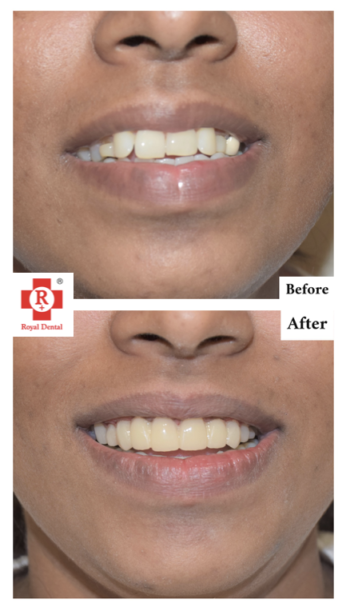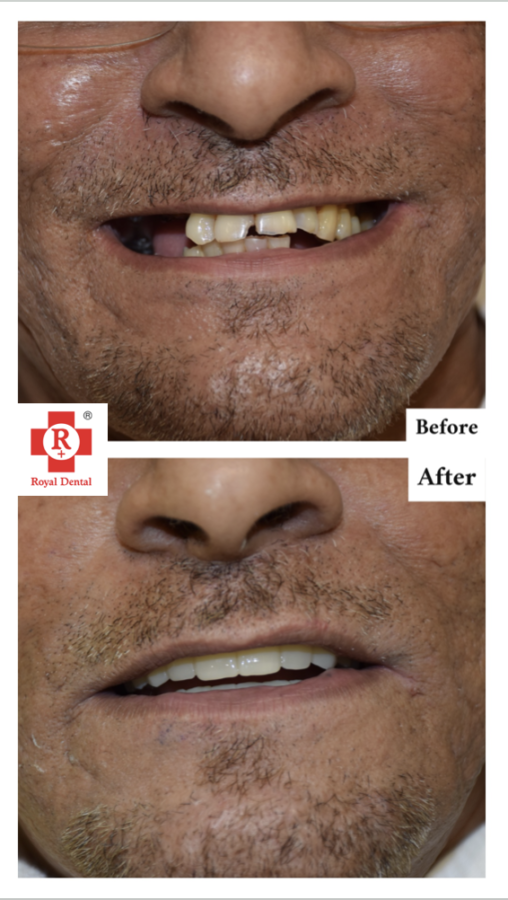It might be likened to venturing into unknown waters when navigating the dental health insurance environment in India. It becomes essential to comprehend the subtleties of dental insurance in a nation where maintaining good oral hygiene is becoming increasingly important. This site seeks to be your guide by illuminating the true scope of dental health insurance in India. Imagine this as a map of your dental insurance that clarifies the meaning of abbreviations such as major treatments, preventative care, and basic procedures. We’ll break down the coverage possibilities as we go along, giving you the knowledge you need to make wise choices regarding your dental health. So buckle up and let’s explore the ins and outs of dental health insurance in India, peeling back the layers to protect your teeth.
Landscape of Dental Health Insurance in India
Current Status and Growth of Dental Insurance Market: Among the constantly changing dental health insurance market in India, none stands out as a sector growing at a noteworthy rate. Let’s explore the statistical data that clearly illustrates the growing need for dental insurance as we set out to comprehend the situation of dental coverage in the nation today.
Statistical Insights on the Rising Demand
In recent years, there has been a noticeable increase in the demand for dental insurance in India. Recent studies from the industry indicate that there has been a significant rise in the number of people choosing dental insurance coverage. Based on statistical data, there has been a notable increase in insurance enrollments across all age groups, with a gain observed year over year.

Notably, the increased understanding of the critical role dental health plays in general well-being is responsible for the surge in demand. People are looking for complete coverage that goes beyond emergency care as they become more aware of the preventative benefits of dental care.
A shift in consumer behavior is further demonstrated by the statistical analysis, which points to a preference for insurance plans with comprehensive dental care. This increase in demand is indicative of a larger trend in society that is placing more emphasis on preventative healthcare, with oral health emerging as a major area of concern.
Increasing Awareness Among the Indian Population
The market for dental insurance is expanding, but this isn’t just a numerical phenomenon—Indians’ increased knowledge of dental insurance is closely linked to this expansion. People’s understanding of the advantages of dental insurance has been greatly aided by awareness campaigns, instructional programs, and focused outreach projects.
Perhaps oral health hasn’t always been the main topic of conversation when it comes to health in India. But there has been a noticeable shift thanks to the combined efforts of insurance companies and healthcare activists. The benefits of having dental insurance coverage, both for normal and preventative dental care as well as for curative procedures, are now better known to the public.
The emergence of digital platforms and social media has shown to be a potent tool for spreading knowledge about dental health insurance. Via the internet, infographics, success stories, and testimonies have become widely available and have greatly increased the level of knowledge among Indian citizens.
Dental Treatment Health insurance in India
Routine Check-ups and Preventive Care: In the realm of dental health insurance in India, understanding the coverage for routine check-ups and preventive care is pivotal. Let’s delve into the significance of regular dental check-ups and how insurance plays a crucial role in supporting preventive measures.
Importance of Regular Dental Check-ups:
- Early Detection of Issues: Regular check-ups allow dentists to detect issues at an early stage. From cavities to gum disease, timely identification enables prompt intervention, preventing the progression of dental problems.
- Preventive Advice and Education: Dentists provide valuable advice on maintaining good oral hygiene during these routine visits. From proper brushing techniques to dietary recommendations, patients receive personalized guidance, empowering them to take proactive steps in caring for their teeth.
- Monitoring Oral Health Trends: Regular check-ups help dentists monitor the trends in a patient’s oral health. This longitudinal approach enables the identification of patterns or changes, aiding in the prevention of chronic conditions and ensuring personalized care.
- Cost-Efficient in the Long Run: Investing in regular check-ups is a cost-efficient strategy. Detecting and addressing dental issues early not only prevents the need for expensive treatments but also contributes to overall health and well-being.
How Insurance Supports Preventive Measures?
Dental health insurance acts as a proactive partner in promoting preventive care by offering coverage for routine check-ups and related preventive measures. Here’s how insurance supports these crucial aspects:
Many dental insurance plans include coverage for routine dental check-ups. Policyholders can visit their dentists for regular examinations without bearing the full financial burden, making preventive care more accessible.
Some insurance providers go a step further by offering incentives for preventive measures. Preventive care including cleanings, sealants, and fluoride treatments may be completely or partially covered by this.

Prominent dental insurance companies frequently participate in educational campaigns to increase public understanding of the value of preventative treatment. This might entail offering internet resources, setting up workshops, or distributing educational materials.
Dental insurance networks often collaborate with dental care providers to emphasize the importance of preventive services. Network benefits may include exclusive discounts, additional coverage, or enhanced services for preventive treatments, encouraging policyholders to proactively engage in maintaining their oral health.
Common Dental Procedures
Knowing exactly what is covered by dental health insurance in India is crucial when it comes to common dental procedures. Let’s look at how insurance covers critical operations like root canals, fillings, and dental extractions and talk about the importance of exclusions and restrictions.
Dental Treatments covered under Health insurance in India
Routine Dental Check-ups and Cleanings:
Most dental insurance plans cover regular dental check-ups, including examinations and cleanings, typically on a biannual basis.
X-rays:
Diagnostic procedures such as dental X-rays are often covered as part of routine check-ups or when required for specific dental conditions.
Fillings:
Basic dental fillings for the treatment of cavities are commonly covered by dental insurance.
Extractions:
Tooth extractions, including surgical extractions, are generally covered by dental insurance.
Root Canal Treatment:
Endodontic procedures like root canal treatments are often covered, although coverage may vary.



Crowns and Bridges:
Dental crowns and bridges, whether for restorative or cosmetic purposes, may be covered by dental insurance plans.
Orthodontic Treatment:
Some dental insurance plans may provide coverage for orthodontic treatments, particularly for children. However, coverage for adult orthodontics can vary.
Dentures:
Full or partial dentures may be covered, depending on the dental insurance plan.
Periodontal (Gum) Treatment:
Treatments for gum diseases, including scaling and root planing, may be covered by dental insurance.
Emergency Dental Care:
Immediate dental treatment for emergencies, such as accidents or sudden severe pain, may be covered by dental insurance.
Understanding Limits and Exclusions
★ Annual Maximum Limits: There is frequently an annual maximum restriction for dental insurance. The most that the insurance company will pay in a given calendar year for operations that are covered. Understanding this limit is essential, as exceeding it may result in out-of-pocket expenses for the policyholder.
Waiting Periods: Some dental insurance policies impose waiting periods, during which specific procedures may not be covered or coverage may be limited. It’s imperative to be aware of these waiting periods, especially if immediate treatment is required.
★ Exclusions for Pre-existing Conditions: Dental insurance policies may have exclusions for pre-existing conditions. This means that certain dental issues present before the commencement of the policy may not be covered or may have limited coverage. It’s crucial to review these exclusions to manage expectations regarding coverage.
Coverage Tiers and Co-payments: Different procedures may fall into distinct coverage tiers, each with its associated co-payment requirements. Policyholders should be familiar with these tiers and co-payments to anticipate their financial responsibility for various treatments.
Braces and Aligners Coverage | Dental Health insurance in India
In order to achieve a harmonious tooth structure and rectify misalignments, orthodontic treatments—braces and aligners in particular—are essential. It’s crucial to understand the details of each policy, as dental health insurance coverage for various procedures might differ. This is a summary of how braces and aligners are usually covered by insurance:
- Braces: Traditional metal braces are often covered, to some extent, by dental insurance plans. Coverage may include a percentage of the total cost, and policyholders may be required to cover the remaining portion. Some policies may also have a lifetime limit for orthodontic coverage.
- Aligners (e.g., Invisalign): As technology advances, aligners like Invisalign have become popular alternatives to traditional braces. Dental insurance policies may also cover aligners, but it’s crucial to confirm the exact terms and restrictions. Aligner coverage may be subject to similar reimbursement structures as traditional braces.
- Pre-authorization and documentation: Many insurance providers require pre-authorization before initiating orthodontic treatments. This involves submitting documentation, such as X-rays and treatment plans, to the insurer for approval. Ensuring proper documentation is in place is essential to facilitating a smoother reimbursement process.
Age Limits and Considerations for Orthodontic Coverage
Orthodontic treatments are often linked to a certain age range, with adolescence being the primary emphasis. Adults may, however, also choose orthodontic treatment for the sake of function or appearance. It’s critical to comprehend the age restrictions and factors affecting orthodontic coverage:
Coverage for Children and Adolescents: Children’s and teenagers’ orthodontic procedures are frequently covered by dental insurance policies. Realizing how critical it is to correct problems with dental alignment while a child is still developing. Certain age groups may have coverage limitations or age restrictions on policies.
Adult Orthodontic Coverage: Even though orthodontic procedures are typically linked with younger populations, more and more adults are pursuing them. Adult orthodontic procedures may be covered by certain dental insurance policies, although the conditions and maximums may be different from those for children.

Lifetime Maximums: Many dental insurance plans impose lifetime maximums on orthodontic coverage. This is an upper limit on the total amount of money the insurance company will cover for orthodontic procedures over the course of a person’s lifetime. In order to schedule their orthodontic therapy appropriately, policyholders should be informed of these maximums.
Waiting Periods and Gradual Coverage: There may be waiting periods before some orthodontic procedures are reimbursed by some insurance policies. Furthermore, orthodontic treatment coverage could be designed to increase progressively over time. Later policy years offered a wider range of coverage.
Conclusion
Finally, we have delved into the complex world of dental health insurance in India, revealing the subtleties of coverage for regular examinations, basic operations, and orthodontic treatments. Dr. Chirag Chamria stresses the value of knowing policy details and seeking preventative treatment. As we part ways, keep in mind that routine examinations are the best friend of your teeth. Dental health insurance relieves financial strain, and people who take advantage of it will have healthier, whiter teeth. Dr. Chamria highly suggests that you take this preventative action to protect both your bright smile and long-term financial security. The first step towards achieving ideal oral health is committing to full dental coverage.





